The London Storyteller
Museum Review: Guards On Horses & Men In Sheds
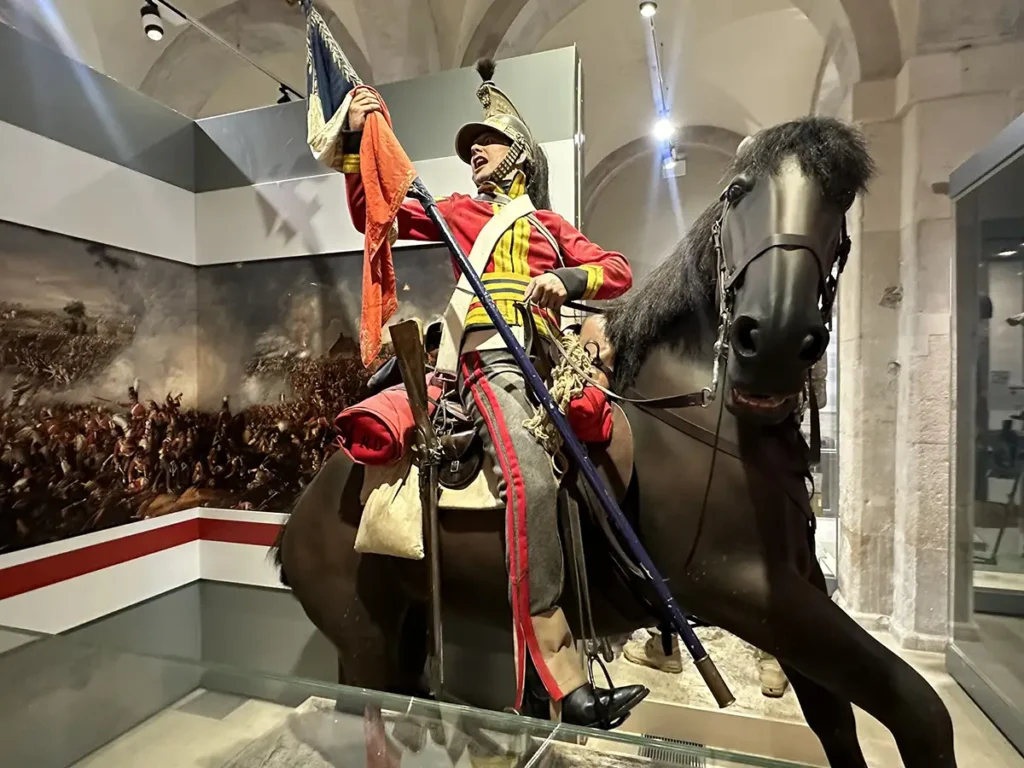
The Household Cavalry Museum is a no nonsense military museum that offers for ten pounds about thirty minutes of interesting exhibits and some useful background on the history of the regiments that comprise the current King’s Life Guard and those who have been condensed into it.
These fine fellows are the ones often plagued by ruthless tourists along Whitehall , who on occasion may be mildly mauled by His Majesty’s equine ambassadors of British hospitality.
Fortunately, the museum is devoid of the burgeoning clutter of touch screen “reimagining” by zealous curators of a certain cultural ilk who have mashed the soul out of so many of our more celebrated museums and cultural collections in London.
Here we find some logically curated exhibits with satisfying descriptions mounted in cases and with a rich array of uniforms, artefacts, weaponry, memorabilia, medals, object d’art, death medals, false legs.
It was a joy to see one of Lord Uxbridge’s prosthetics. His own peg was blown off him at the Battle of Waterloo in 1815, whilst mounted next to the Duke of Wellington to which he expressed with the kind of matter of fact stoicism that one would hope for from a British officer in such circumstances, “By God Sir, I think I’ve lost my leg” and to which the Duke famously responded “By God, so you have.”
It reminded me of a previous visit to the Guards museum across St James Park and the British Army Museum in Chelsea. These, aside from some of the overpriced twee ephemera for sale in the obligatory gift shop are the best kind of museums. There is a bit of dust to them, a sense of permanence about the presentation of their collections.
They have not given ground to the cretinocracy’s relentless drive to annihilate the inquisitive spirit of their patrons (HRP, Tate Galleries, etc take note) and expect the least of them.
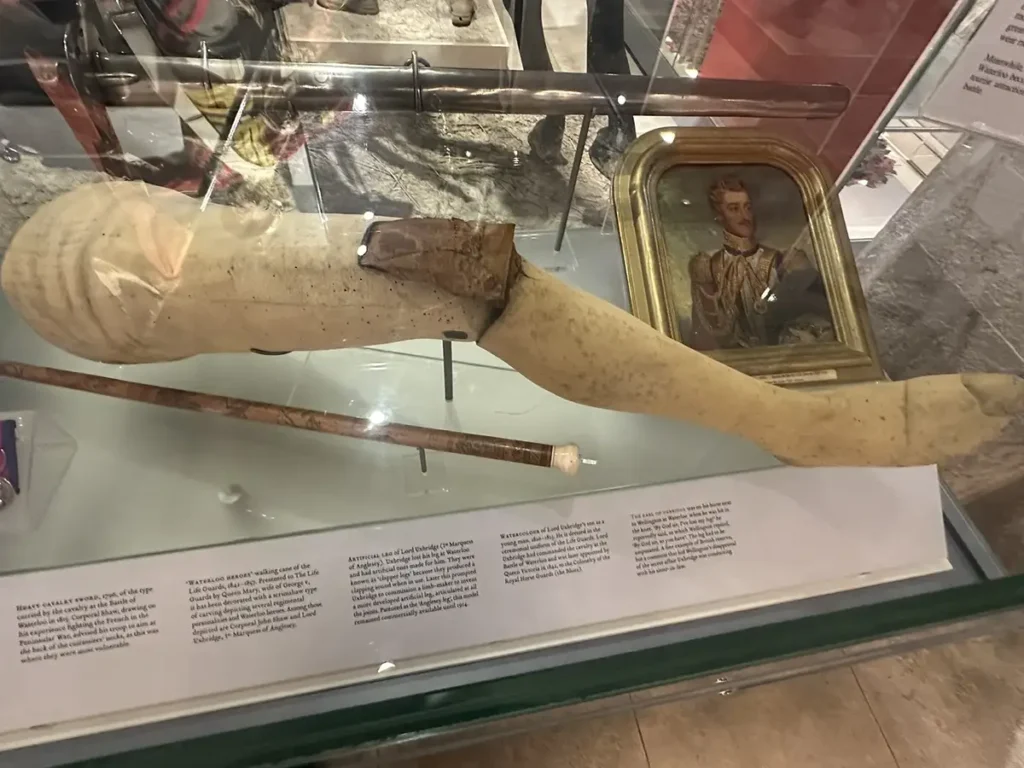
A few days previously, I visited the De Havilland Aircraft Museum. Situated just outside London a few miles where the M1 and M25 converge. This too was a joy and for similar reasons.
Its volunteers appeared to be male, mostly of a finer vintage and relish convening in a space of superior engineering heritage where the senses may be charmed by the smell of adhesives, engine oil, plywood, balsa wood, rubber, metal. This is a natural operating environment for these fellows and one can sense their joy and enthusiasm. Men in sheds, though the restoration team also seem find themselves busy in the Amy Johnson Hanger; named after the tragically doomed aviation pioneer who disappeared in 1941. She achieved landmarks such as flying solo to Australia from England in 1930, London to Moscow in a day in 1931 and winning the Segrave Trophy in 1932.
The museum represents an era of British innovation in aircraft production. The De Havilland Aircraft Company was one of many engineering firms that created supreme works of sublime aviation technology.
Forgotten by many now and so this museum rightly keeps the landing lights of their exploits traceable. Others of this ilk Avro, Vickers, Sopwith Aviation Company, Supermarine Aviation, Gloster Aircraft Company, Hawker, English Electric, Siddeley conjure thoughts of men in uniform standing with or at other times as men in tweed wearing horn rimmed spectacles
It evokes associations with pioneers in motor racing and other men in sheds: Colin Chapman, Ken Tyrell, Ron Tauranac, Frank Coslin, Harry Weslake, Bruce McLaren, Tony Vandervell, Graham Hill, Harvey Postlethwaite and Keith Duckworth.
The De Havilland Museum is a lightning bolt from another era. It was one often overshadowed by war and of thrilling optimism in terms of the art of the possible that could be achieved by the advancing of engineering horizons.
Geoffrey DeHavilland, the marque’s founder, was born before the age of powered aviation in 1882 and by the time of his death in 1965, the human race had reached for the stars and were a handful of years away from stepping foot on the Moon. He would lose two of his three sons in accidents involving his own aircraft.
Having created the Mosquito – that radical work of boys own heroic wartime invention – he would be haunted by the tragic legacy of another DeHavilland world beating innovation the Comet. It, the world’s first commercial jet airliner, would prove to be an invaluable lesson for those that would follow in the construction of such unparalleled craft after two fatal crashes owing to metal fatigue.
To the childhood contemporaries of De Havilland in the 19th century – had it materialised above them – the Comet would have appeared a thing of awe, of other worldly origin. 1066, Haley’s Comet. 5 BC, the Star of Bethlehem. A thrilling spectacle of unsettling optimism and portent.
I rejoiced in the names of the other aircraft invented there. Mosquito, Sea Vixen, Venom, Hornet, Jet Dragon, Trident, Vampire. The Vampire was known whilst in development until 1944 as the Spider Crab: how the nomenclature of such a craft may have slipped so far from the aquatic arthropod to the undead is perhaps lost in the misted of spectacles overseeing the drawing boards of the past.
There almost certainly is a reason and I wish that I had a fraction knowledge of the custodians of the DeHavilland Museum to venture a cogent answer.
I spent two hours there, the intrigue kept on coming as I explored my way through. Recommended.
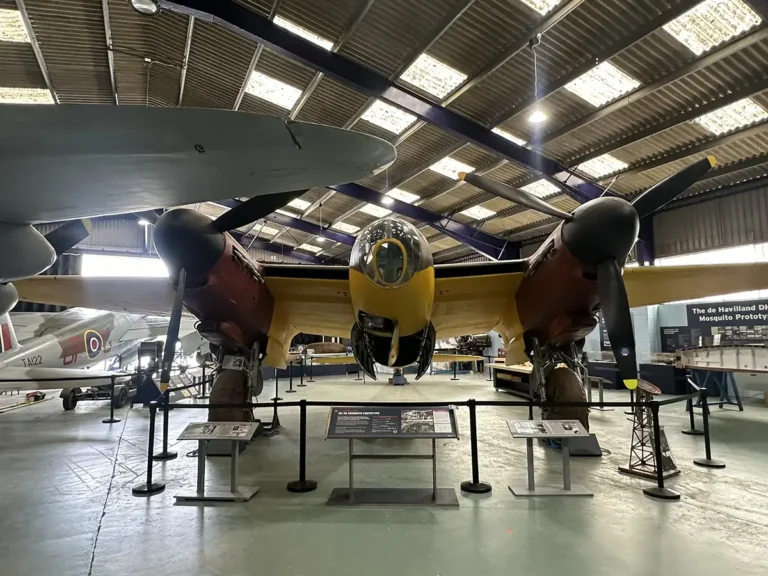
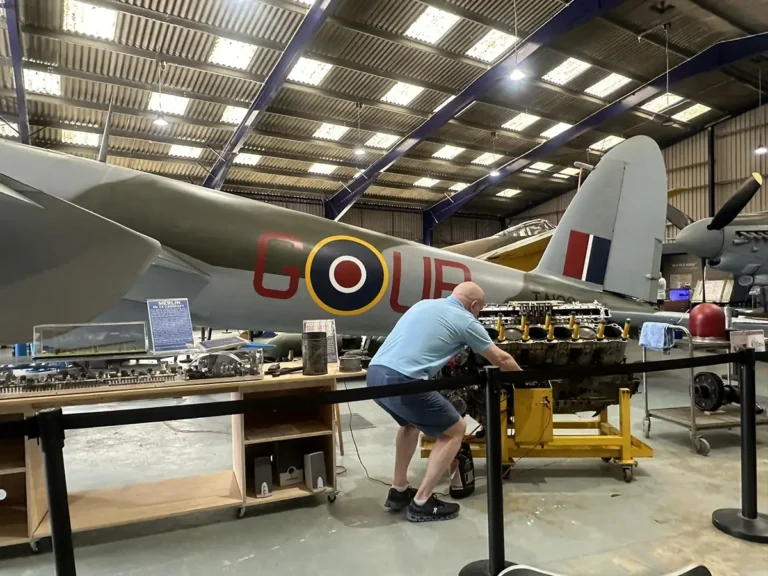
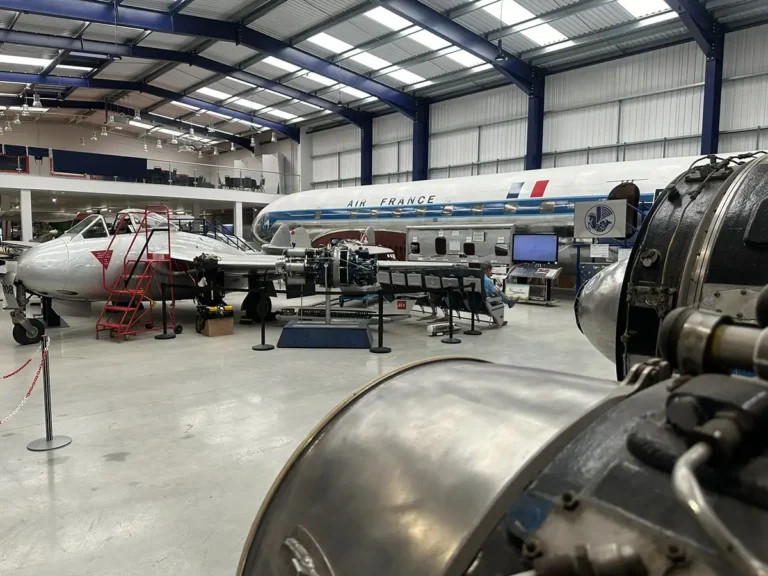
The London Storyteller is proudly powered by WordPress
